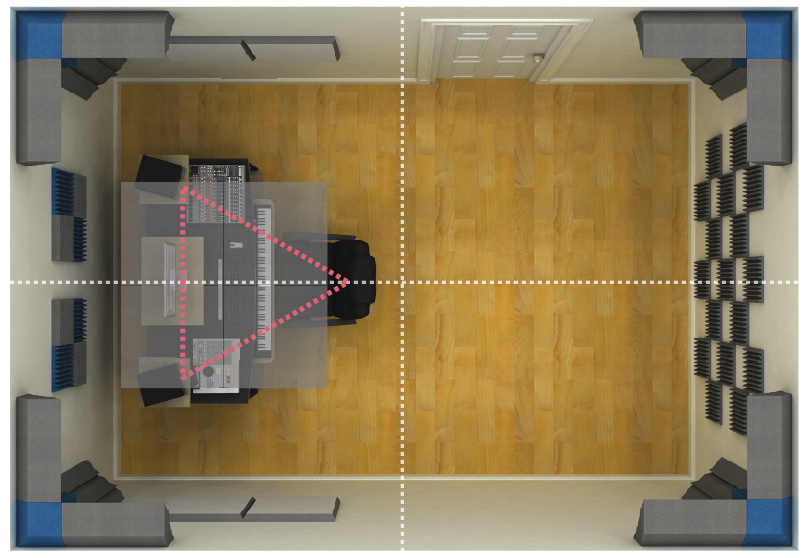How to create a good monitoring environment
Discover the key considerations in control room design

A monitoring system is only as good as the room it is in. The energy trapped in the room by the isolation shell (ie, walls, floor and ceiling) bounces around, reflecting from surface to surface, losing energy by virtue of losses caused by friction in the vibrating air molecules and whatever surface is struck. The acoustic energy can take some time to decay by these means. This decay period is the reverberation time of the room, or T60 (the time taken for the sound pressure to drop 60dB). The T60 of a room differs by frequency and bringing some uniformity, as well as brevity, to this is the aim of control room acoustics.
Decaying reverberation interferes with the sound your monitors are producing, causing unpleasant phase distortions. You need to mop up as much of this reflected energy as possible, and this is achieved through absorption. Just as with the T60, absorption varies across the frequency spectrum. Low frequencies, when perceived as equally loud as their higher brethren, will possess more energy and thus require more effort to absorb. They also possess one other irksome characteristic: omnidirectionality. Low frequencies radiate from your monitors in all directions at once, and so need to be mopped up everywhere.
The less energetic high frequencies are directional, so their absorption can be discretely placed and will require less effort. One useful non-frequency dependent characteristic is that sound pressure in a waveform is always at its highest at a physical boundary, ie the wall. So boundaries are the best place for absorbency.

Their loss, your gain
In the process of absorbing acoustic energy it is inevitable that high frequency losses will outweigh low frequency losses, so to combat this the high-end needs to be allowed to reflect a bit more (high frequencies present less of an audible phase shift problem), keeping its end up, as it were. This is achieved through diffusion, which means reflecting energy over a wide angle, or 'spraying', if you like. This reduces specular reflections to your ears, which are more likely to be heard as singular phase distortions.
Absorption and diffusion are deployed through studio treatments you may have heard of: bass traps (or resonant absorbers), wideband absorbers and diffusers, often in the form of quadratic residue diffusers (QRDs). When planning your control/listening room, it's best to include the placement of such treatments, as opposed to fitting them after main construction is complete. Building a framework to house bass traps and wideband absorbers - such as a bulkhead above/behind your monitors - can use up dead space and keep your precious floor area clear. Similarly, the rear wall can be built out to house deep absorbers in amongst shelving/storage and seating. Side walls can be left free for mounting diffusers to prevent mid/high frequency specular reflections back into your ears.
There are no hard and fast rules, so study studio photos online, and see which setups catch your eye and look achievable.
Want all the hottest music and gear news, reviews, deals, features and more, direct to your inbox? Sign up here.
For much more on building your own studio, pick up Future Music 294, which is on sale now.
Future Music is the number one magazine for today's producers. Packed with technique and technology we'll help you make great new music. All-access artist interviews, in-depth gear reviews, essential production tutorials and much more. Every marvellous monthly edition features reliable reviews of the latest and greatest hardware and software technology and techniques, unparalleled advice, in-depth interviews, sensational free samples and so much more to improve the experience and outcome of your music-making.
